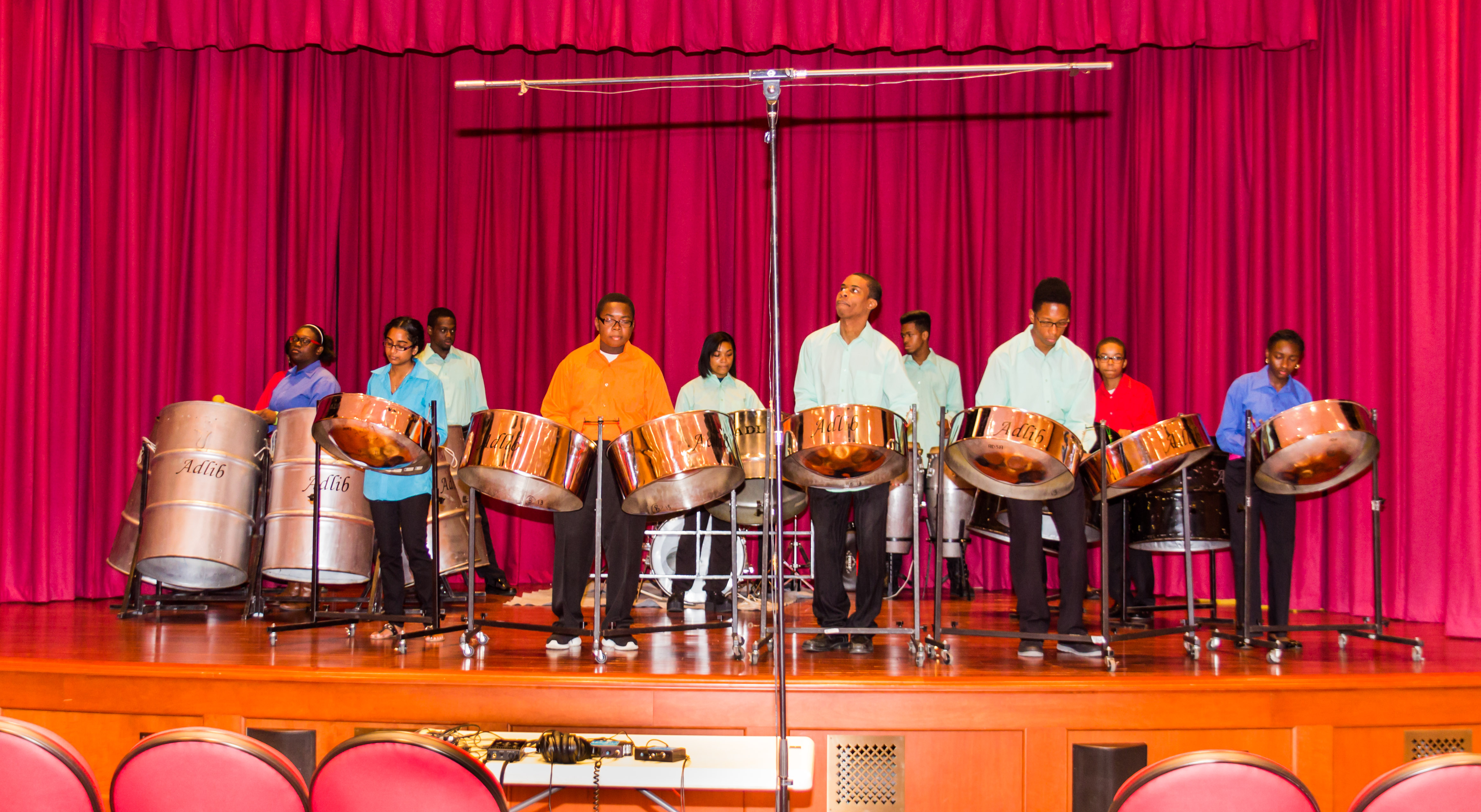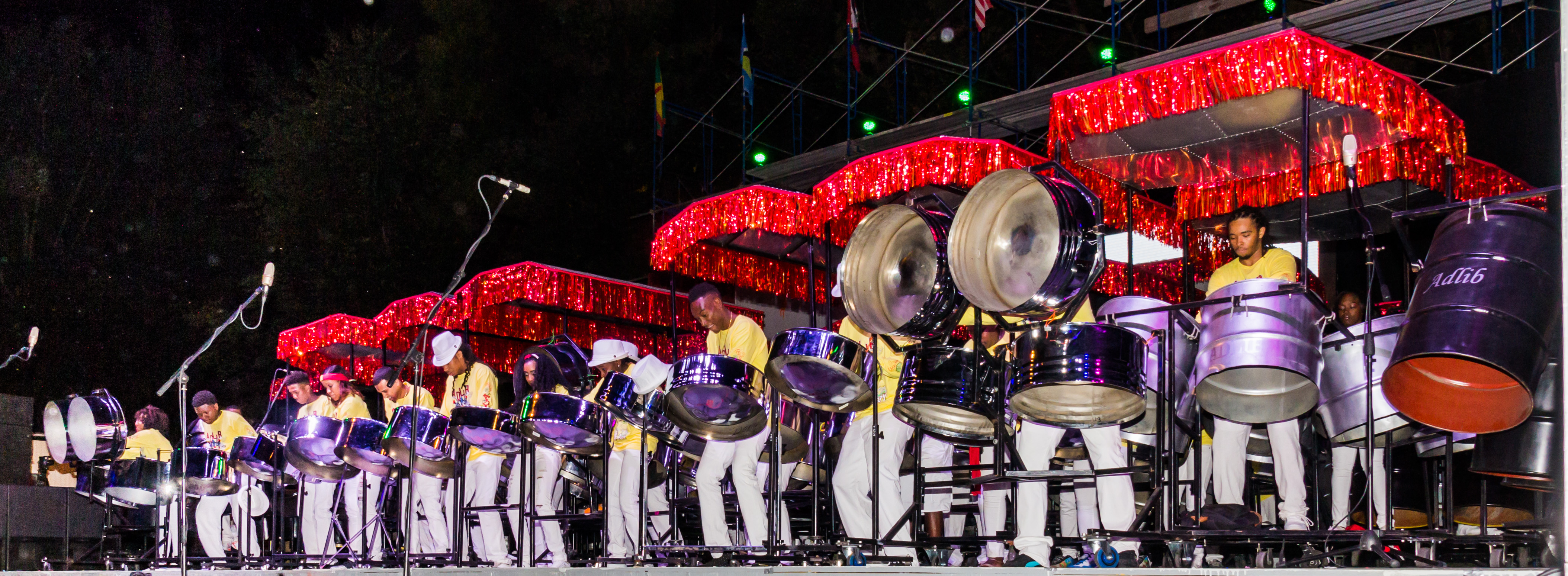Audio Recording Microphone Technique Basics
 Orchestral Miking (Spaced Omnis - "T" Stand)
Orchestral Miking (Spaced Omnis - "T" Stand)
Adlib Steel OrchestraMost audio recording techniques can be classified as either "orchestral recording" (also referred to as "orchestral miking"), or "close miking". These two techniques, as used for stereo recording, are discussed below. Monaural recording is similar but with fewer microphones. Surround sound adds a fair amount of complexity beyond what is discussed here.
There are advantages and disadvantages of both miking techniques. I use orchestral recording for most of my steelband recordings, with the occasional addition of spot microphones. Either technique, or a mix of both, may well produce the best results in a particular circumstance.
Achieving the best result depends on the acoustics of the recording venue, the size of the group being recorded and the presence or absence of vocalists or "electronic" instruments. Additionally, the choice of technique to use may be influenced by external considerations, such as the equipment available and the budget; the amount of time available for setup, checkout and rehearsal; the presence or lack of sound reinforcement if the recording is a live concert; and a myriad of other factors. This article is an attempt to describe the two techniques, the differences between them, and the advantages and disadvantages of both.
